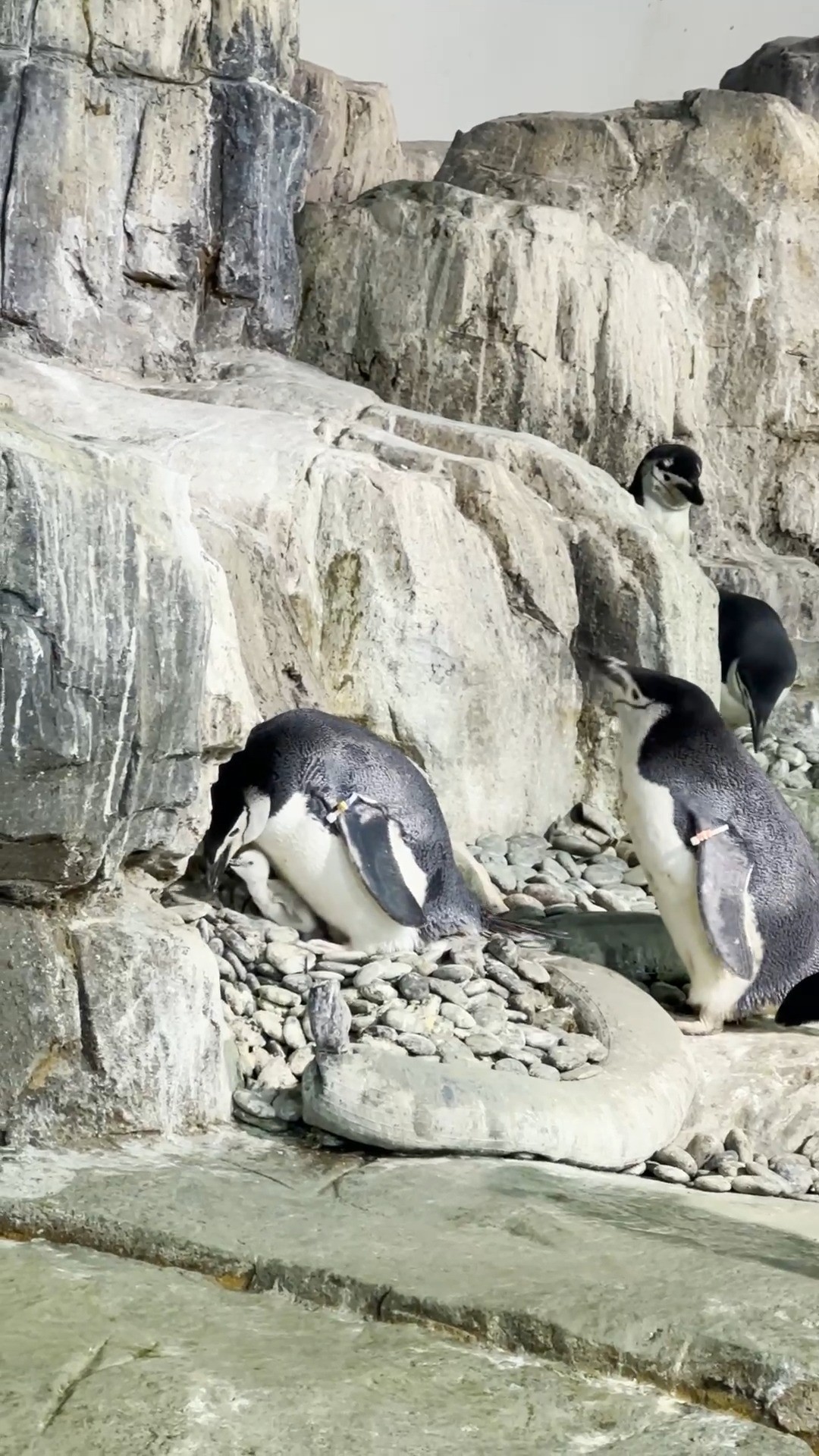Summary:
– Chinstrap penguins are fascinating creatures found in the Antarctic region.
– The behavior of chinstrap penguin parents while feeding their chick is worth observing.
– The birth of a chinstrap penguin chick is a special event during specific months.
– These penguins have unique adaptations that allow them to survive in harsh environments.
– Chinstrap penguins play an important role in the Antarctic ecosystem.
Have you ever seen a chinstrap penguin parent feeding their chick? It’s an incredible sight to behold, and Keeper Michelle recently captured a heartwarming clip of this extraordinary moment. The young penguin, born on June 28, is now growing under the attentive care of its parents. This article will explore chinstrap penguins’ unique and fascinating aspects and their parenting behavior.
As the name suggests, Chinstrap penguins are characterized by the distinctive black marking beneath their chin. These adorable creatures inhabit the Antarctic region, enduring the harshest conditions on Earth. Despite the challenges they face, chinstrap penguins have adapted to their environment in remarkable ways.
One of the most interesting behaviors of chinstrap penguins is their parenting techniques. Watching the penguin parents feed their chick is truly captivating. These dedicated parents take turns swimming into the frigid waters, braving the cold currents to catch fish for their hungry offspring. The clip captured by Keeper Michelle showcases this beautiful act of nurturing.
The birth of a chinstrap penguin chick is a special event that usually occurs between November and December, ensuring the safety and survival of these adorable creatures during the slightly milder months. The parents create nests from pebbles, carefully selecting the perfect spot to raise their chick. They take turns incubating the egg, which takes approximately 37 days. Once the chick hatches, both parents actively participate in its care.
This shared responsibility is essential for the chick’s survival. The parents communicate through distinct vocalizations, recognizing each other’s calls in the bustling colony. This remarkable bond allows them to synchronize their hunting and feeding efforts efficiently, ensuring their chick receives proper nutrition.
The chinstrap penguin has specific adaptations to thrive in its icy habitat. Their streamlined bodies and flipper-like wings enable them to swim effortlessly through the freezing waters, reaching remarkable speeds. Underwater, they can dive to depths of up to 60 meters, using their strong bills to catch fish precisely.
Another fascinating aspect of these penguins is their ability to survive extreme temperatures. Their tightly packed feathers create a waterproof barrier, insulating them from the freezing water. Additionally, their blood vessels are designed to minimize heat loss, preventing their core body temperature from dropping dangerously low.
Chinstrap penguins are captivating in their parenting behavior and survival adaptations and play a vital role in the Antarctic ecosystem. As they feed on krill, small shrimp-like organisms, they indirectly contribute to regulating their population. This delicate balance ensures that the krill population does not exceed sustainable levels, enabling other species, such as whales and seals, to thrive.
Intriguingly, these social creatures establish large colonies of thousands or millions of individuals. They huddle together for warmth, offering protection from the harsh winds and cold temperatures. The collective body heat generated by these huddles is essential, especially when they face severe blizzards.
As we observe the adorable clip of chinstrap penguin parents feeding their chicks, we appreciate these incredible creatures’ beauty and resilience. Their parenting techniques, birth rituals, and unique adaptations testify to their extraordinary survival skills in the harsh Antarctic environment.
So next time you visit a zoo or watch a captivating nature documentary, remember the fascinating world of chinstrap penguins and their significant role in maintaining the delicate balance of the Antarctic ecosystem. Their parental love, resilience, and amazing adaptations inspire us all.
*****
Source Description
Keeper Michelle recently captured this clip of chinstrap penguin parents feeding their chicks! The young penguin was born on June 28.


